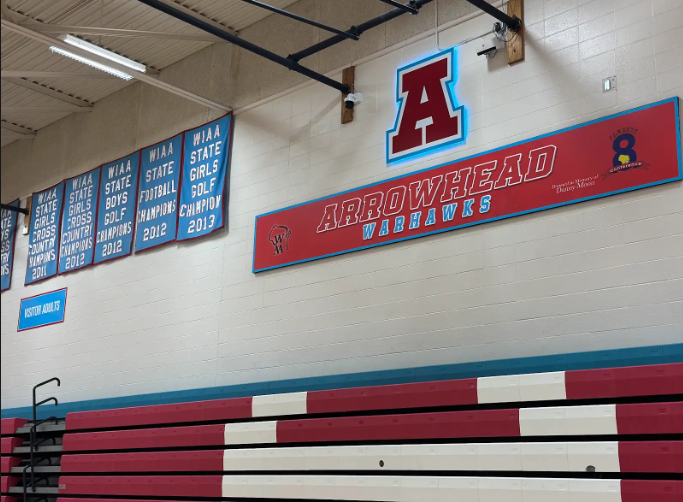School rivalries have long been an essential part of student life, fueling both excitement and passion on and off the field. Rivalries are woven into the fabric of community and educational identity; however, while they ignite pride and unity within schools, they can also raise questions about how competition can shape relationships.
Rivalries are a tradition, serving as more than just competition outlets for sports, academics, arts, and even fundraisers. Many times, rivalries are between schools within close proximity, causing the rivalry to become synonymous with the local community. While a rivalry can be dividing, many times they spark traditions of good acts. For example, every year, rival high schools Arrowhead and Oconomowoc do a week-long food drive against each other to see which school can donate the most food the week the two schools play each other for football.
“In the case of rival schools, competition on the playing field is often emphasized, but when schools creatively partner together for something bigger than the game, student-athletes, coaches and communities alike feel more connected to their communities and such activities can help grow respect and appreciation,” Jason Culler, CMAA, and Emily Barkley, CMAA, said in an article for the National Federation of State High School Associations.
“I think school rivalries unite us as a student body,” Hadley Ersbo, junior, said.
While rivalries lead to a sense of identity and school spirit, they can also lead to unhealthy competition. Instances like taunting have been furthered through the use of social media. On Instagram and TikTok, friendly banter can be amplified to the spread of negativity. This can also lead to real-life tensions if a post is created mocking the other school, sparking online feuds.
“On social media, I see nearby high schools post bad things about Arrowhead and I think that’s bad for the community,” Avery Hill, junior, said.
A more recent example of school rivalries gone bad was at the Michigan vs. Ohio State college football game on November 30th. Before the game, Ohio State was ranked 2nd in the country and was a 19-point favorite to beat their rival Michigan at the game at Ohio State. However, Michigan surprised many when it won 13-10, and after the game, a large fight between the two teams ensued on the field. The fight occurred after a Michigan player obtained a Michigan flag and intended to plant it on the Ohio State logo at the 50-yard line. As a result, an Ohio State football player ripped the flag off of its post. A fight ensued that lasted for several minutes before on-field police broke the teams up; multiple officers used pepper spray in an attempt to end the scuffle. This was not the only fight that ensued during Rivalry Week for college football. Four other scuffles and altercations broke out in other rivalry games.
School rivalries are often used as teaching moments that emphasize teamwork and sportsmanship to show students how to channel their passion constructively. They can teach resilience in the face of defeat and humility in victory which are valuable lessons that are carried on when schooling is done.
“When it’s healthy, fierce competition can engender respect as well as passion. Whatever antagonism exists is balanced by an awareness that the two opponents need each other as integral halves in the contest,” Sean McCollum said in an article for Learning For Justice
School rivalries allow moments of reflection on how competition can bring out both the best and worst in people. Rivalries can remain a powerful force for building important life qualities with guidance and a focus on respect.












